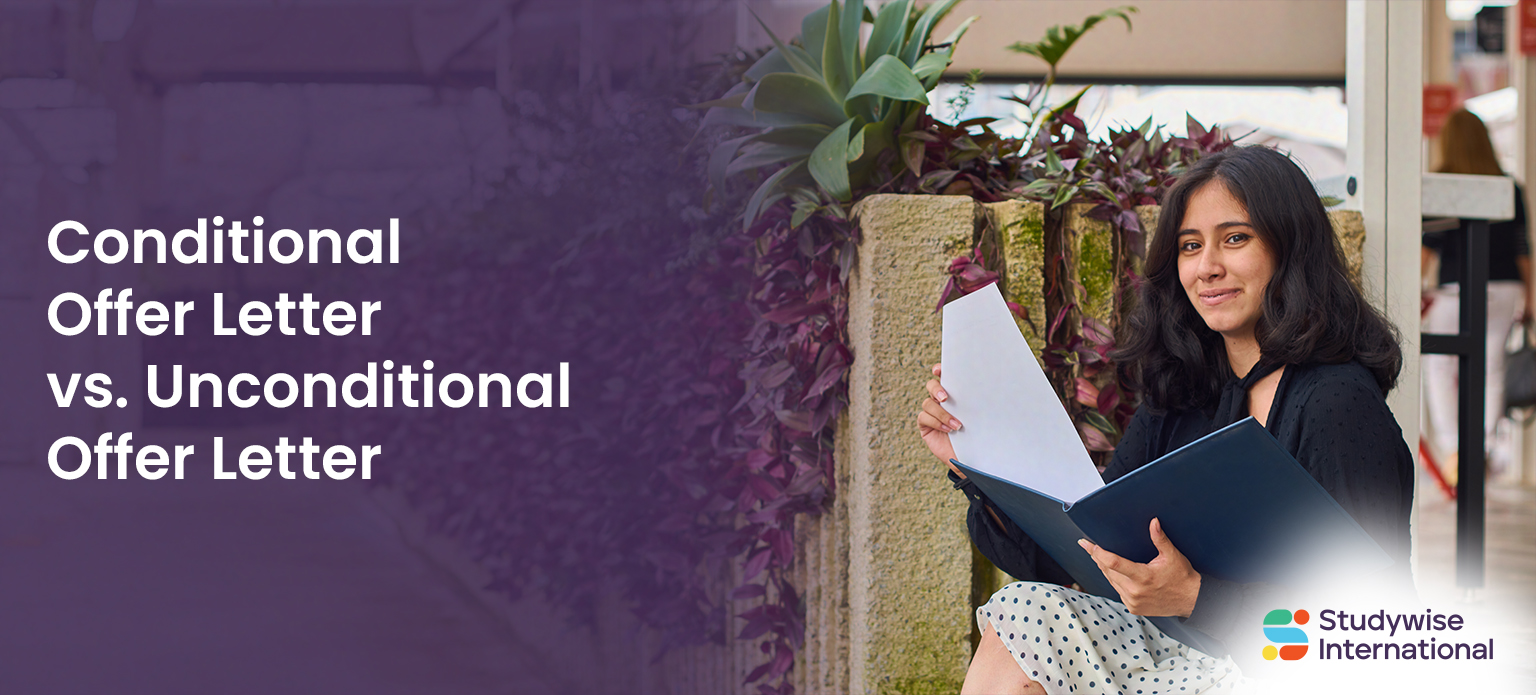
Conditional Offer Letter vs. Unconditional Offer Letter
- Categories All Study in Abroad Blogs, Studying Abroad
- Date July 15, 2024
After applying to a university, you need an offer letter to apply for the student visa. An offer letter is a formal document displaying the success in securing an admission in the university. It mentions the details of your course and fee coupled with the course starting and ending dates. Ideally, the next step is to accept the offer by email. However, it largely depends on the type of offer letter you have received.
Most universities extend two types of offer letters to international students – conditional and unconditional offer letters. In order to accept the offer, proceed with the visa process or any of the post-acceptance steps, one must carefully address the type of the offer letter received. Both these letters serve different purposes. These letters came into light to streamline the admission process for international students. It assesses the students’ academic status and their time of securing the seats at their course. It further sets a common ground of expectations, regardless of the varied qualifications and grading systems.
In this blog, we will discuss the types of offer letters and how students must go about it.
Unconditional and Conditional Offer Letter
Universities have clear guidelines and requirements for students applying for their programs. If you have received an unconditional offer letter from your dream university, congratulations! You have cleared all stages of the game and will not proceed for the final round. Unconditional offer letters confirm the students’ reservation on their desired course or program. The document means that you match all requirements of the university. You must simply accept the offer letter and pay the first installment to complete your admission procedure. Typically, it is the tuition fee for your first semester unless you plan to pay annually or at once. However, the university may also request some confirmation payment prior to the tuition fee as a deposit. Secondly, this is when you get yourself a relevant health insurance as prescribed by your study destination.
However, sometimes even when the students match the criteria, their documents don’t support it. A conditional offer letter, as the name states, allows admissions to such students but with certain conditions. Although it reflects on the university’s interest in your application, it is only after you meet the conditions, does the offer stand.
Also read: Student Interview Questions and How to Answer Them
Meeting the Requirements
Some of the most common requirements in the conditional offer letters are:
- Academic Requirements: If the student has applied to the university before their final exams, they must provide their academic records and transcripts after receiving the conditional offer letter. Having said that, if you fail to acquire the minimum percentage set by the university guidelines, you will no longer be able to claim your seat.
- Entrance Test: Universities have course-specific entrance test score requirements from its applicants. This includes entrance tests like the GRE and English language proficiency tests like IELTS Academia, TOEFL, PTE Academic and Duolingo. Or Germany, in case you apply to a German university. In some cases, the students’ other academic records outshine their language test results. Or their profile, resume or Statement of Purpose (SOP) does. Under such circumstances, the universities specifically ask for a score or band in your language proficiency test.
- Genuine Temporary Entrant (GTE): This is only applicable to students applying to study in Australia. Students must prove their genuine interest and ability to pursue the course. Universities may ask for financial documents, work experience, statement of purpose (SOP) or cover letter as a chance for you to demonstrate the same. Only after satisfactory verification of all documents, the university will accept you as their student.
Some programs do have strict requirements and limited seats. You may also explore similar programs if you are not able to meet the conditions in your offer letter.
Also read: Best Study Abroad Programs After 12th and Procedure
Next Step
You can accept both the types of offer letters before meeting the conditions. After receiving a conditional offer letter, you can provide all the necessary documents to the admissions committee as instructed in 2-3 months. If not, the educational institution can revoke the offer. Read your offer letter carefully to understand what is needed of you. Plan to complete the steps as promptly as you can. Universities might also be able to suggest alternatives or extensions of their requirement upon enquiry. Once everything is in order, the university will issue an eCOE (Electronic Confirmation of Enrolment) letter. This document acts as the basis of both your visa and loan applications. UK universities call it CAS (Confirmation of Acceptance for Studies) while the Americans called it the I-20 form. They are all the same. You can also start looking for accommodation, understand their transportation and begin packing.
Receiving one means you must start preparing for your visa application and interview. However, they still might not get an unconditional visa. Visa authorities have their own requirements and can put some of their own conditions forward. Particularly, if you don’t meet the country’s language proficiency bar, your admission at the university stands null. Furthermore, retaking the test will mean reapplying to the university. Hence, ensure to check all requirements before joining the race. Alternatively, speak to an expert.
Connect with Studywise International for a FREE CONSULTATION today!
You may also like

Ireland Intake 2024-25: Universities & Preparation Timeline

TOEFL Scoring System and Validity


